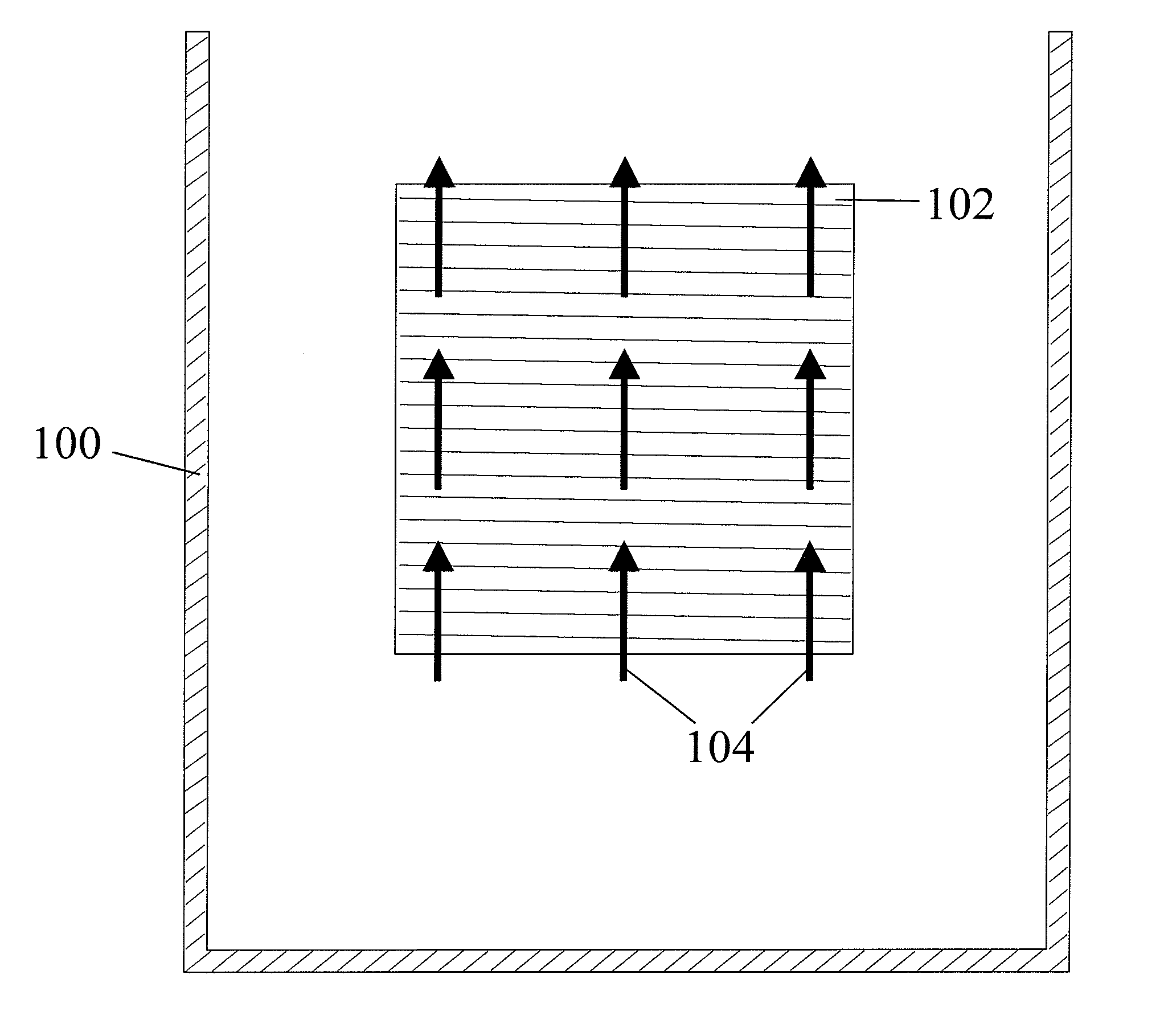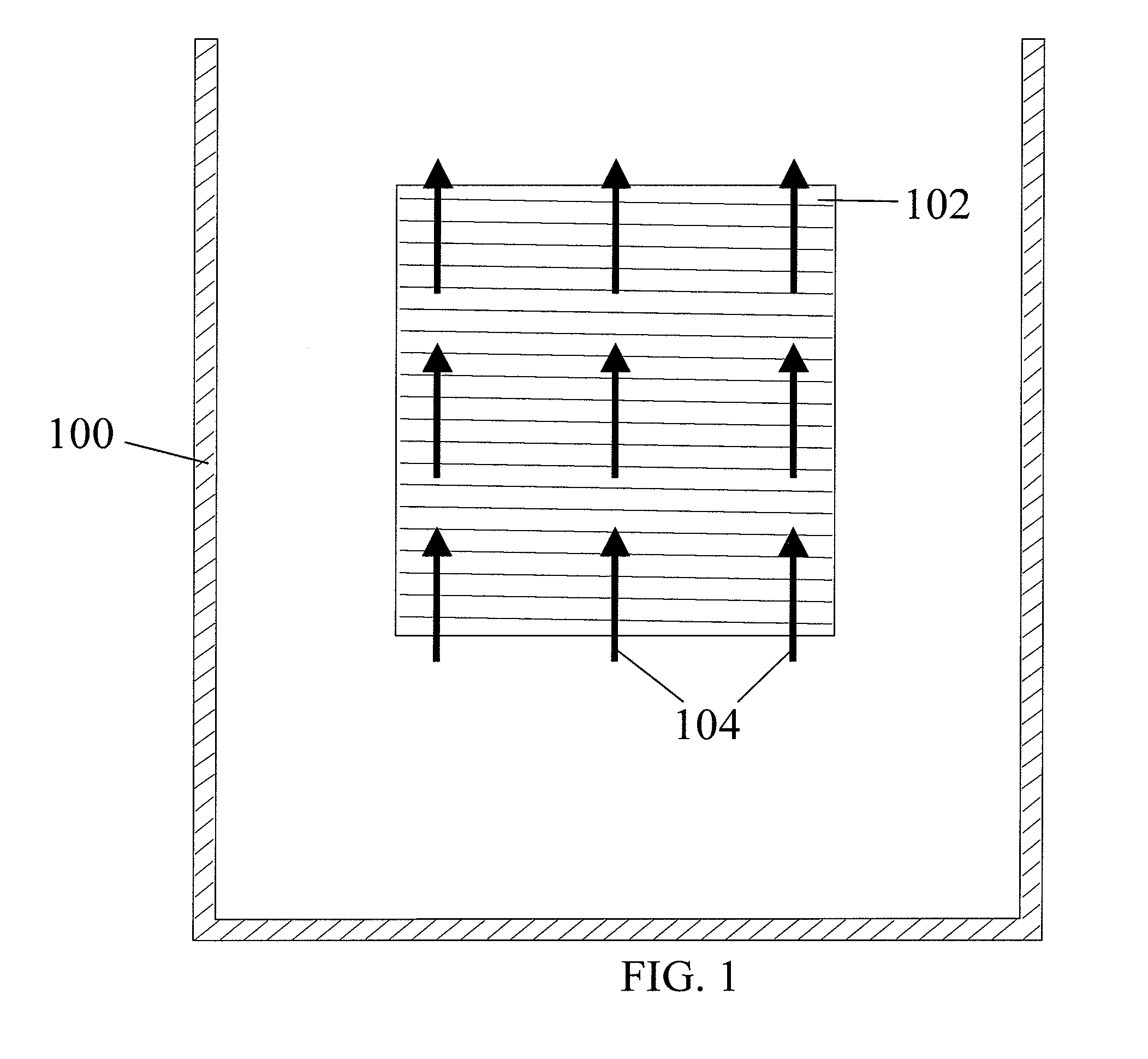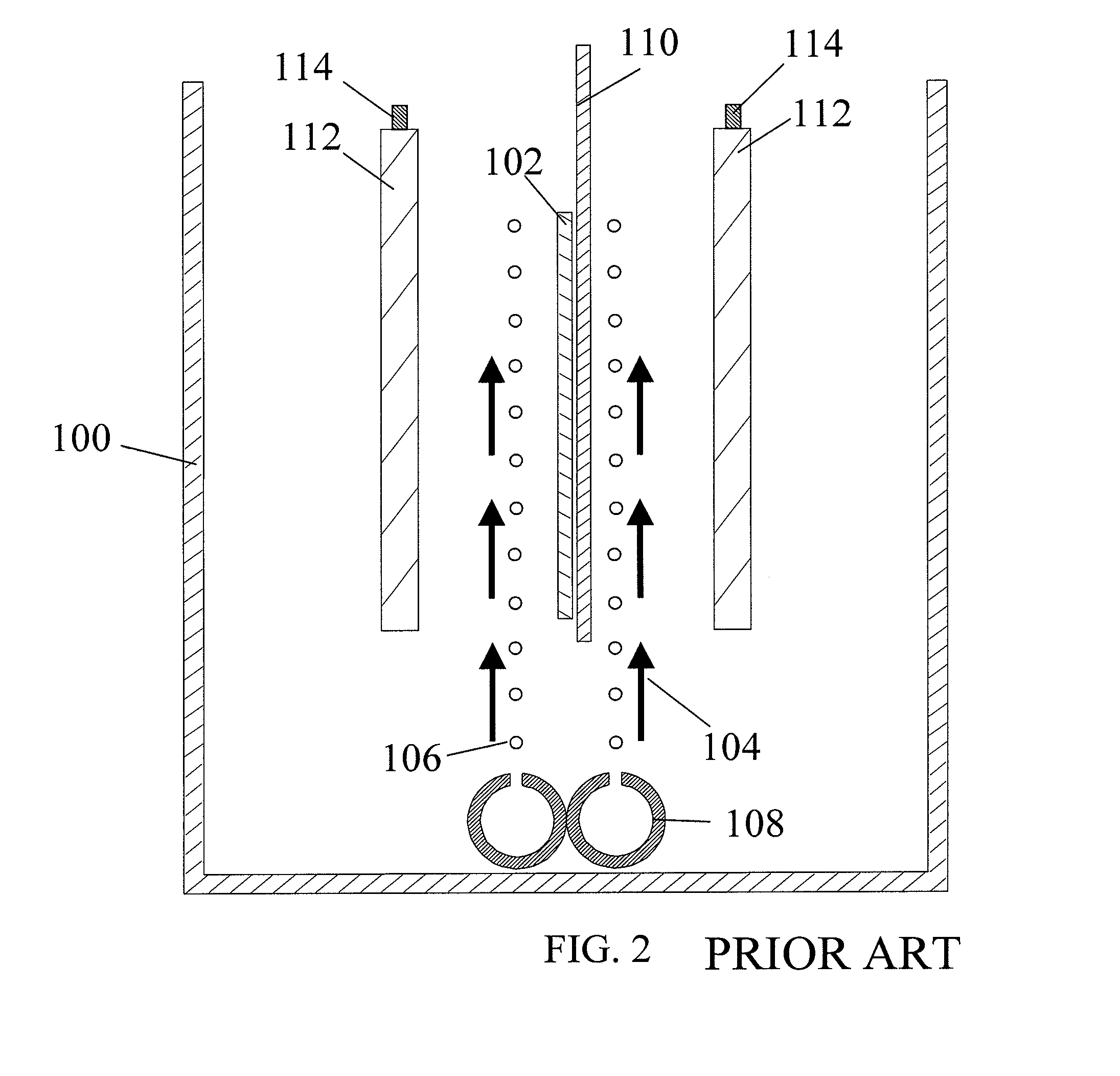Electroplating cell with hydrodynamics facilitating more uniform deposition on a workpiece with through holes during plating
a technology of hydrodynamics and plating cells, which is applied in the direction of conductive pattern reinforcement, electronic components, printed circuit manufacturing, etc., can solve the problems of low solution movement rate, adversely affecting the performance of finished printed wiring board interconnection, and creating areas where copper cannot be deposited, so as to facilitate uniform metal deposit distribution
- Summary
- Abstract
- Description
- Claims
- Application Information
AI Technical Summary
Benefits of technology
Problems solved by technology
Method used
Image
Examples
example 1
Comparison
[0106] This example illustrates the use of the plating cell (100) with air sparging to deposit copper onto a workpiece (102), to demonstrate the prior art.
[0107] The experiments were conducted in the plating cell (100) shown in FIG. 2. An acid copper sulfate electrolyte containing ˜97 g / L CuSO4, 210-215 g / L of concentrated H2SO4, ˜63 ppm Cl−, and 350 ppm polyethylene glycol (PEG) was used as the copper electroplating bath. As known by those skilled in the art, the chloride / PEG acts as a suppressor and is not difficult to control. The plating bath does not contain difficult-to-monitor / control additives such as brighteners and / or levelers and hence the bath is considered “additive-free.” The plating bath temperature was maintained in the range of 22 to 25° C.
[0108] The initial experiments for plating cell (100) characterization were conducted on a stainless steel panel (450 mm×600 mm), as a workpiece (102). The copper plating process was controlled by DC current at 25 A / f...
example 2
[0111] This example illustrates the use of the plating cell (100) to deposit copper uniformly onto a workpiece (102), to demonstrate the effects of the various attributes of the plating cell (100) of the present invention, such as flow rate of electrolyte through the eductors (116), anodes (112) to workpiece (102) distance, oscillation (154) of the workpiece (102), and vibration (152) of the workpiece (102).
[0112] The experiments were conducted in the plating cell (100) shown in FIGS. 10 to 12. An acid copper sulfate electrolyte containing ˜97 g / L of CuSO4, 210-215 g / L of concentrated H2SO4, ˜63 ppm Cl−, and 350 ppm polyethylene glycol (PEG) was used as the copper electroplating bath for all experiments. The chloride / PEG is termed a suppressor and is not difficult to control. The plating bath does not contain difficult-to-monitor / control additives such as brighteners and / or levelers and hence we consider the bath as “additive-free.” The plating bath temperature was maintained in th...
example 3
[0119] This example illustrates the use of the plating cell (100) to deposit copper uniformly onto a workpiece (102), to demonstrate further effects of the various attributes of the plating cell (100), such as flow rate of electrolyte through the eductors (116), anodes (112) to workpiece (102) distance, use of an anode chamber (126), use of a porous fiber cloth (128), use of additional non-conducting shielding (130), and use of a baffle (138) under the anode chamber, on the current distribution over the panel workpiece (102) surface.
[0120] The experiments were conducted in the plating cell (100) shown in FIGS. 10 to 12. An acid copper sulfate electrolyte containing ˜97 g / L of CuSO4, 210-215 g / L of concentrated H2SO4, ˜63 ppm Cl−, and 350 ppm polyethylene glycol (PEG) was used as the copper electroplating bath for all experiments. The chloride / PEG acts as a suppressor and is not difficult to control. The plating bath does not contain difficult-to-monitor / control additives such as br...
PUM
| Property | Measurement | Unit |
|---|---|---|
| distance | aaaaa | aaaaa |
| diameter | aaaaa | aaaaa |
| diameter | aaaaa | aaaaa |
Abstract
Description
Claims
Application Information
 Login to View More
Login to View More - R&D
- Intellectual Property
- Life Sciences
- Materials
- Tech Scout
- Unparalleled Data Quality
- Higher Quality Content
- 60% Fewer Hallucinations
Browse by: Latest US Patents, China's latest patents, Technical Efficacy Thesaurus, Application Domain, Technology Topic, Popular Technical Reports.
© 2025 PatSnap. All rights reserved.Legal|Privacy policy|Modern Slavery Act Transparency Statement|Sitemap|About US| Contact US: help@patsnap.com



